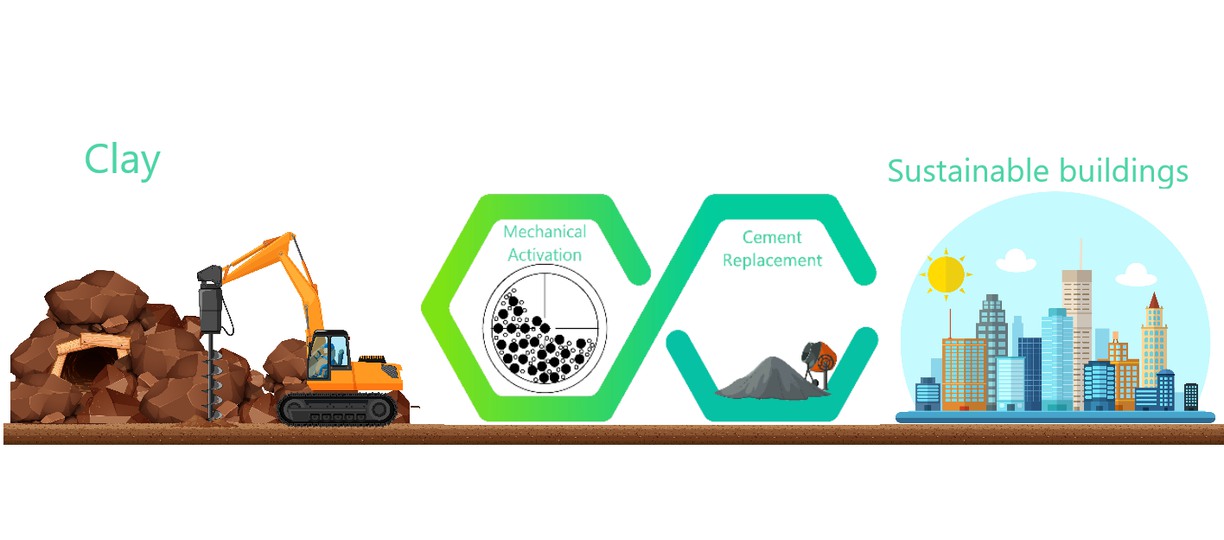
Natural Sources - ClayCem
The ClayCem project aims to develop a sustainable and possibly recyclable cementitious material suitable for structural concrete. The ultimate CO2 footprint is intended to be reduced by at least 50% in comparison with Portland cement. The ClayCem binder will be based on natural clay minerals commonly found in Sweden, also including troublesome types, which will be activated (dehydroxylated and surface modified) by a novel combination of mechanochemical processes with additional thermo-chemical pretreatments.
Most concretes used at present are based on Portland cement. It is well-known very good cementitious binder but unfortunately, its production technology requires application of high calcination temperatures reaching over 1400. That results in a very high CO2 emission reaches 900 kg for each ton of the produced cement. The worldwide production of Portland cement was topped over 2 billion tonnes in 2012. Therefore, the global emission of CO2 reached about 1.8 billion tonnes annually only due to the Portland cement. Common ways to reduce the CO2 related to Portland cement are:
- More efficient utilization or fuels in the cement kiln
- Usage or alternative types or feels (often wastes)
- Reducing the amount of Portland cement by its partial replacement with secondary binders like limestone, blast furnace stroke or fly ash.
- The most dramatic but also the most efficient way is to replace it fully with other binder having significantly lower CO2 footprint.
The main focus of this project is to search for more environmental friendly binder which can fully replace Portland cement at least in certain applications. The source of raw materials should be commonly available and sustainable. Certainly, natural clay minerals fulfill those objectives as they are a major component of soil all over the world. Clay is characterized by a variety of properties according to the exact conditions occurring during its formation. The most common clay minerals are kaolinite, illite (hydrated mica), smectite (montmorillonite, saponite, etc.) and chlorite. Clay composed mainly of illite dominates in Sweden. Properties of clay minerals can be altered by the application of various types of activation processes.
The present project will focus on the development of a novel more ecological activation technology for producing cementitious binders from natural clay minerals.
Andrzej Cwirzen, Karin Habermehl-Cwirzen and Ilda Tole
Contact
Andrzej Cwirzen
- Professor and Head of Subject
- 0920-493387
- andrzej.cwirzen@ltu.se
- Andrzej Cwirzen
Updated:
